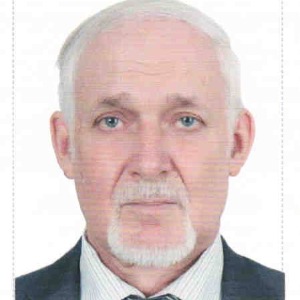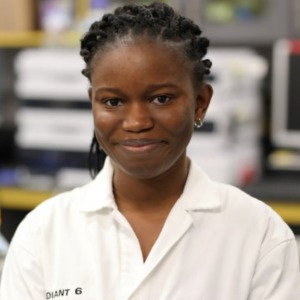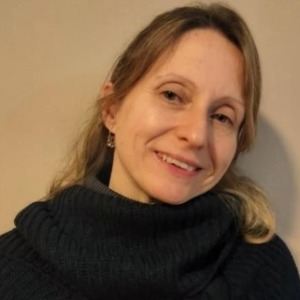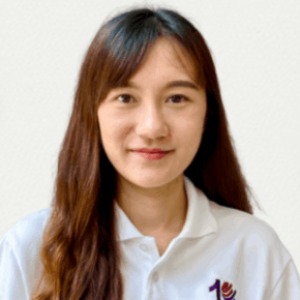Vladislav Sadykov, Novosibirsk State University, Russian Federation
Design of efficient, inexpensive and stable to coking catalysts for transformation of biofuels into syngas and hydrogen is a vital problem of sustainable and renewable energy field. This work presents results of extensive research aimed at design and characteriz [....] » Read More
















Title : A desirable framework for establishing a resource circulation society
Dai Yeun Jeong, Jeju National University, Korea, Republic of
Natural resources are not being circulated as their original circulation system in the process that humans are using them. Its main cause is from the unbalance between the use of natural resources and the treatment of wastes discharged. This unbalance threatens not only the self- [....] » Read More
Title : Personalized and Precision Medicine (PPM) as a unique healthcare model through Bi-odesign-Inspired Bio- and chemical engineering applications to secure the human healthcare and biosafety: Engineering of biocatalysts - from evolution to creation
Sergey Suchkov, R&D Director of the National Center for Human Photosynthesis, Mexico
Antibodies (Abs) endowed with catalytic (enzymatic) properties (DNA- and RNA-hydrolizing, proteolytic ones and others) have been isolated from the serum of patients with different chronic diseases. Disease-associated abzymes may have been "induced" by the Ag implicated [....] » Read More
Title : Catalytic potential of biochar derived from heavy-metal-contaminated biomass
Enrico Paris, CREA-IT & DIAEE, Italy
Plant-Assisted Bioremediation (PABR) represents an eco-friendly strategy for the remediation and valorization of contaminated soils. This approach exploits fast-growing plants capable of extracting pollutants from the soil, offering a sustainable and low-impact alternative to con [....] » Read More
Title : Abzymes (catalytic antibodies) as a generation of unique biomarkers, biocatalysts, potential targets and translational tools towards nanodesign-driven antibody engineering and precision medical practice: From magic bullet to precision weapon
Sergey Suchkov, R&D Director of the National Center for Human Photosynthesis, Mexico
Antibodies (Abs) endowed with catalytic (enzymatic) properties (DNA- and RNA-hydrolizing, proteolytic ones and others) have been isolated from the serum of patients with different chronic diseases. Disease-associated abzymes may have been "induced" by the Ag implicated [....] » Read More
Title : Techno-economic and environmental analysis of Sustainable Aviation Fuel (SAF)
Mehdi Parivazh, Monash University, Australia
Carbon Capture and Utilization (CCU) technologies, especially power-to-liquid (PtL) systems, present a promising pathway for decarbonizing aviation by producing Sustainable Aviation Fuel (SAF), which can reduce lifecycle carbon emissions by up to 80%. This study assesses the te [....] » Read More
Title : PoLA (Porosity Local Analysis): A new and accurate descriptor of microporous volume to predict gas adsorption in porous carbons
Maurizio Cossi, Universita del Piemonte Orientale, Italy
A procedure is presented to describe the porosity of microporous solids (e.g. activated carbons): unlike many methods commonly used at present, PoLA (Porosity Local Analysis) is not based on pre-defined pores of regular shape (like spheres or cylinders) but rather on a point-by-p [....] » Read More
Title : Empowering a sustainable future by biomass conversion on single atom catalysis
Malayil Gopalan Sibi, VSB-Technical University of Ostrava, Czech Republic
Efforts have traditionally concentrated on the use of organic carbon as bioenergy, to produce chemicals and fuels. In the past decade, technologies have been developed to recover high-value commodities from renewable feedstocks. Simultaneously, innovative heterogeneous catalytic [....] » Read More
Title : Simple and effective methods for identifying in vivo gene response reaction mechanisms
Dae Dong Sung, Korea University Sejong Campus, Korea, Republic of
Recently, biomedicine has made a great contribution to the development of the anti-aging field. Biomedical research has revealed that aging mechanisms are deeply linked to the development of cancer and chronic diseases. However, there are still many difficulties in accurately ide [....] » Read More
Title : Doping regulation of the electronic structure for halide double perovskite photocatalytic materials
Zhengquan Li , Zhejiang Normal University, China
Halide perovskites have garnered significant attention for their unique optoelectronic properties in solar-to-fuel conversions. However, the serious charge recombination and a lack of efficient active sites towards a low efficiency, and the poor stability in aqueous solution sy [....] » Read More
Title : Design of power renewable marine hybrid energy used by HOMER in the persian gulf
Ahmad Nohegar, University of Tehran, Iran (Islamic Republic of)
The main goals of this research are to investigate the extraction of energy from renewable sources and design a hybrid system in Qeshm Island. To achieve this approach, at first, by using wind speed data, Weibull distribution function and gamma function, the probability density o [....] » Read More
Title : Functionalization, modification and development of some polymeric membranes producing an advanced variety membranes with selective and distinct specifications can be applicable in desalination
Hossam Ahmed Aly Moustafa Tieama, Abu Qir Fertilizers and Chemicals Industries Company, Egypt
Approximately 97% of all water on Earth is saline water, found primarily in oceans and seas. The remaining 3% is freshwater. Of this freshwater, a significant portion is locked up in glaciers, ice caps, and underground, leaving a much smaller percentage readil [....] » Read More
Title : Green synthesis, characterization and the antibacterial activity study of copper nanoparticles from pomelo (citrus maxima) peels
Ismail Abdullahi, Federal University Gusau, Nigeria
This study illustrates the manufacture of copper nanoparticles utilizing pomelo peels extract (Citrus maxima) as a natural reducing and stabilizing agent. We used UV-visible spectroscopy, Fourier-transform infrared (FTIR) analysis, and Zetasizer nano series to learn more about th [....] » Read More